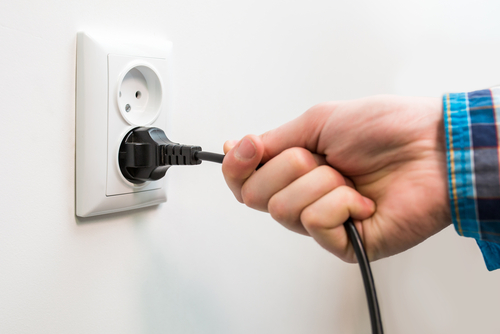If you pick up your device and search for ways to be more productive and reduce stress, one suggestion appears in almost all the advice: unplug. It’s a nice idea to consider detaching from all technology, media, and devices, but a full technology and media embargo is not a realistically achievable goal for most of us. A more achievable goal might be setting appropriate boundaries and developing healthier relationships with our devices that work for our specific needs.
When It’s Time for a Reality Check
Your relationship with your devices– tablets, laptops, game consoles, and especially phones– might be working out well for you. However, if any of the following scenarios sound familiar to you, that may a sign you need to re-examine your relationship with technology and redefine some boundaries:
- You have a pronounced physical response, such as increased pulse, a palpable spike in blood pressure, a jolt of adrenaline, when you hear the notification “ping” on your phone or tablet.
- You take your phone everywhere with you, including the bathroom, and/ or feel nervous when it isn’t physically with you.
- Your friends and family, especially your kids, comment on how frequently you use your devices or how infrequently you interact with them.
- You feel less confident or happy about your own life after interacting with social media.
How to Know Your Limits
Because of the way we do business and live our lives, a full-stop unplugging of devices is not necessarily a practical choice. If you work in healthcare, you need to respond to emergencies. If you practice law, your clients may need to reach you about an urgent development. Businesses have deadlines. Not to mention the full spectrum of personal and family issues and emergencies that may arise in any given day.
If you’re going to unplug, you need to be clear and honest with yourself about what is reasonable for you to do and what you hope to get out of the experience. You need to consider what you’ll do with the time you’re freeing up and how you want to reshape your relationship with your devices once you plug in again. The idea is to use a break or reduction in your technology usage to get more out of the engagements that are part of your daily routine.
What to Unplug and for How Long
You don’t need to make a sweeping declaration for yourself, e.g. “No devices after 6 p.m.” or go hide in a cabin in the woods for a weekend to reshape your relationships with your devices. You might start by just paying attention to the amount of screen time you’re using each day or week and look for ways to reduce those hours. Maybe you need to set aside 10 minutes, maybe an hour or two, each day. Here are some other ways to unplug for short periods in the course of a day:
- If you start your day with checking a screen, move that task further down in your morning routine. Eat something, get some coffee, take a shower first.
- Use out-of-office messages when you go home at the end of the workday.
- Limit ways people can reach you. Let people know its better to call you directly, send an email, or send a text, but don’t leave all the options available all the time. You have a preference, so make that preference known.
- Put devices away at mealtimes or set a time in the evening to power down each device (this also facilitates better sleep).
- Avoid keeping your device active and nearby while you’re working on something else.
- Keep your device within reach, but silence notifications.
Whatever strategies you use to reduce or limit your screen time when you unplug, and whatever you decide to do in those minutes or hours instead, make a plan in advance for covering possible emergencies. Maybe that means you have one contact or one way to reach you no matter what. Maybe that means you delegate tasks or emergency coverage to someone you trust. Knowing you have a backup plan when you unplug will allow you to make the most of that time to reset, recover, and return to your routine with more gusto.
The Records Company can be part of your unplugging plan, too. Let us put our technology to work in tracking and retrieving records, so you don’t have to. We make the calls. We send the emails. We deliver the records you need directly to you. Contact us today to learn what we can do to save you precious time in your workday.
